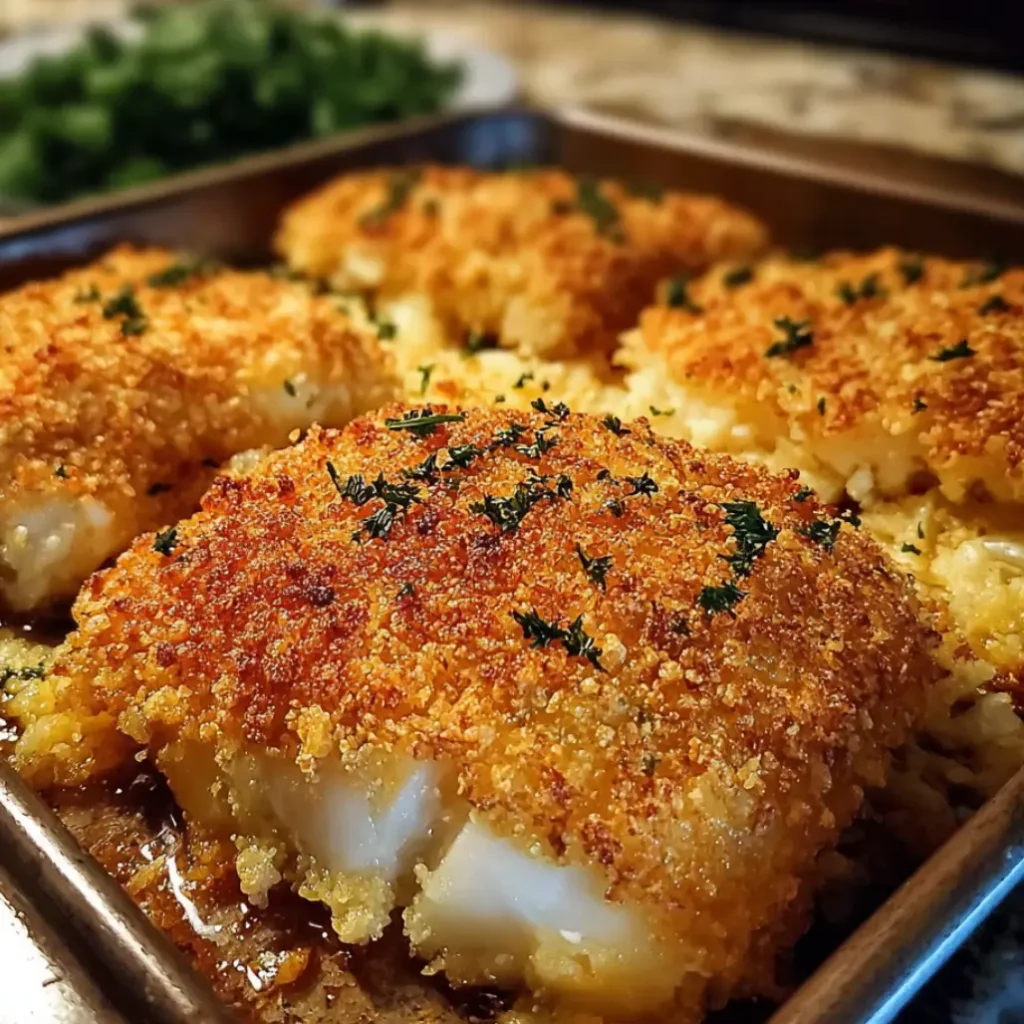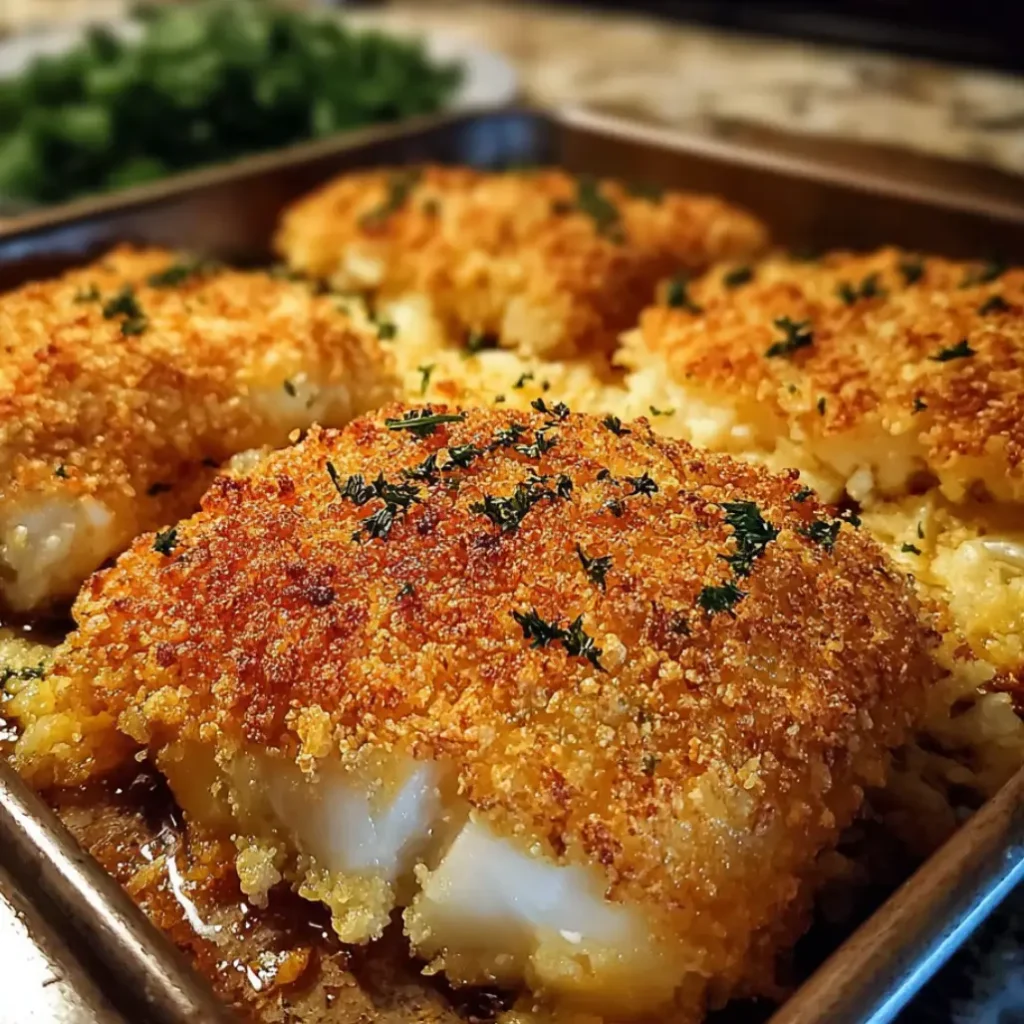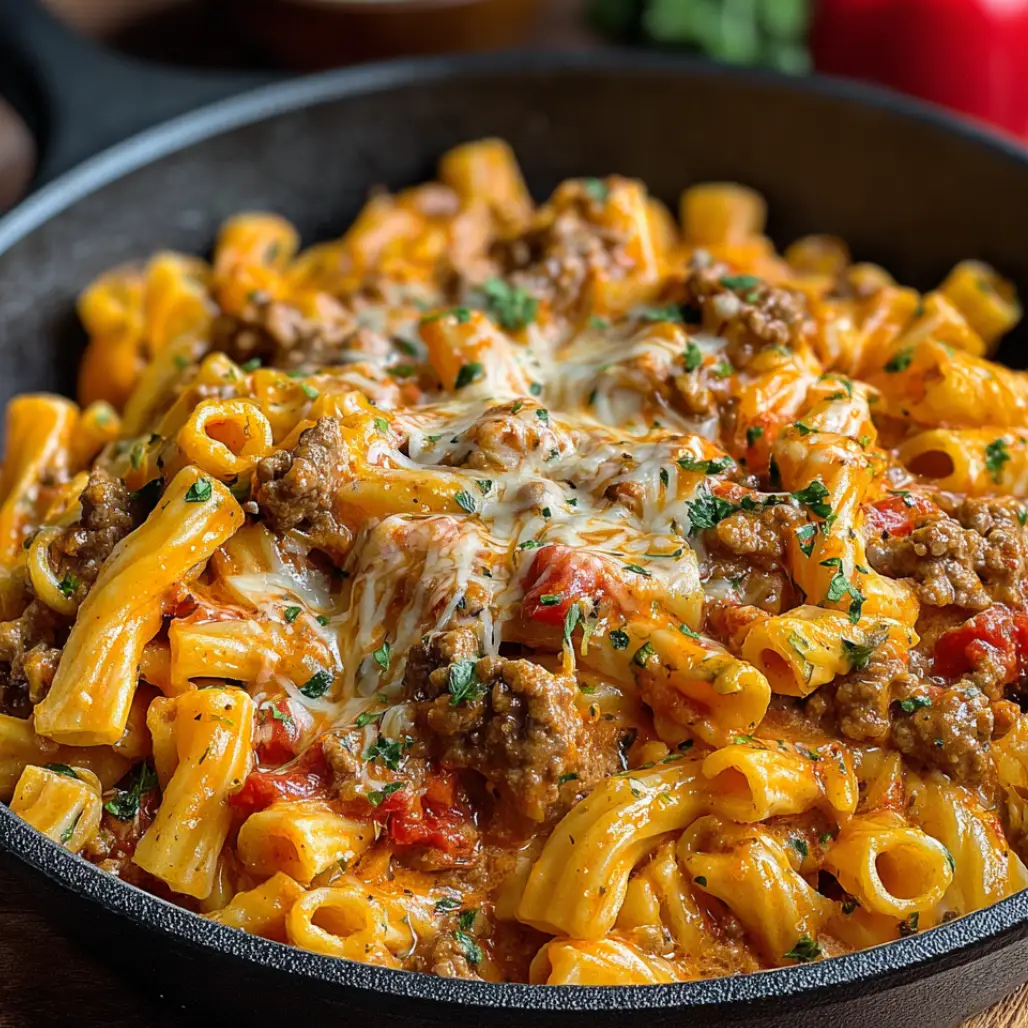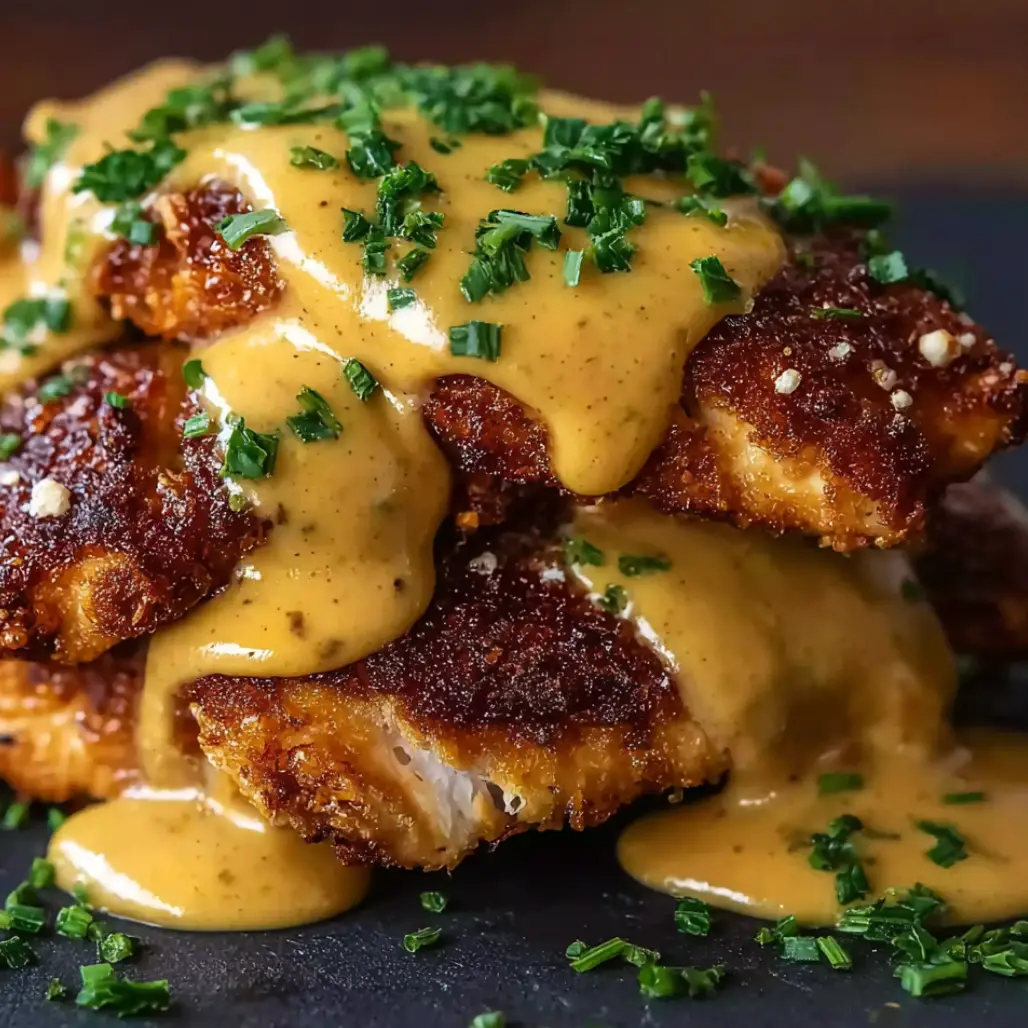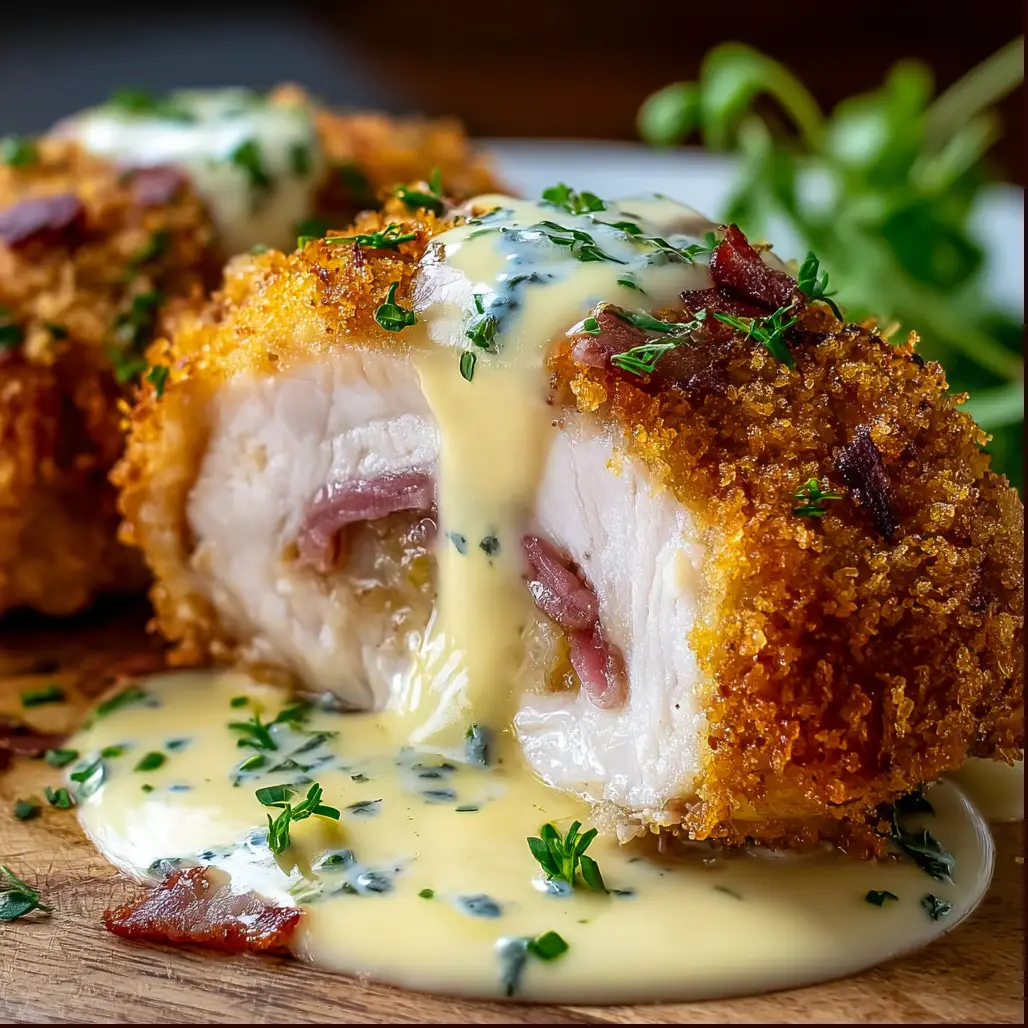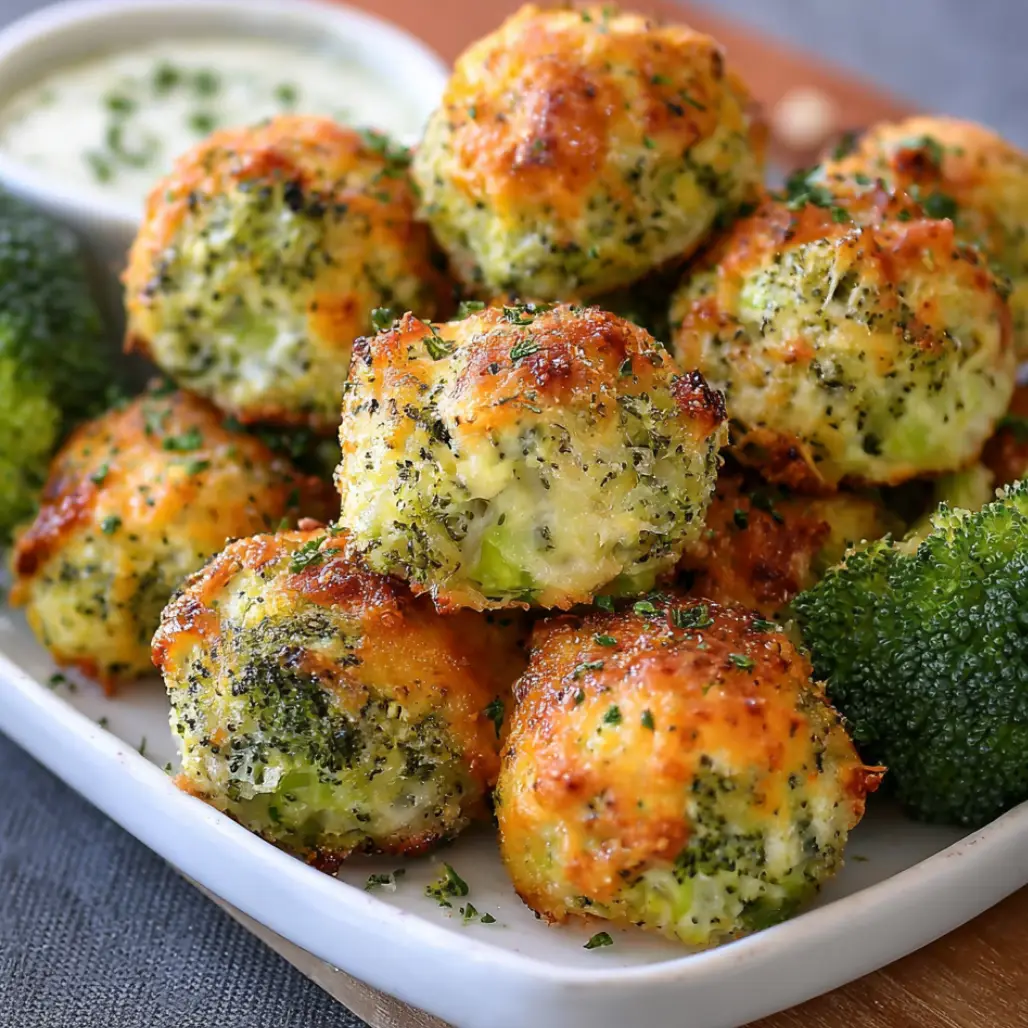| Prep Time: 15 minutes | Cook Time: 15 minutes | Total Time: 30 minutes | Serves: 4 |
Discovering the perfect balance between crispy textures and tender, flaky fish has never been easier than with this spectacular baked parmesan crusted fish recipe that transforms ordinary weeknight dinners into restaurant-quality experiences. This delightful dish combines the nutty richness of parmesan cheese with aromatic herbs and golden breadcrumbs, creating a crust that becomes beautifully golden and irresistibly crunchy because the high heat of the oven works magic on the cheese and breadcrumbs. What makes this recipe truly extraordinary is how the parmesan crust seals in the fish’s natural moisture while adding layers of savory flavor that complement rather than overpower the delicate seafood beneath, making it an ideal choice for both experienced cooks and kitchen newcomers who want to create something impressive without complicated techniques.
Why This Baked Parmesan Crusted Fish Recipe Works So Well
The science behind this baked parmesan crusted fish recipe lies in the perfect marriage of ingredients that work together harmoniously because each component serves a specific purpose in creating the ideal texture and flavor profile. Parmesan cheese contains natural enzymes and proteins that brown beautifully under high heat, creating that coveted golden crust while adding umami depth that enhances the fish’s natural flavors rather than masking them. The panko breadcrumbs provide essential structure and crispiness because their larger, airier texture creates more surface area for browning compared to regular breadcrumbs, resulting in a crust that stays crunchy even after cooling slightly.
Fresh herbs like parsley bring brightness and color to the dish because they contain volatile oils that remain vibrant when mixed with the cheese and breadcrumbs, while garlic powder and oregano add complexity without overwhelming the delicate fish flavors. The combination of lemon juice and olive oil serves dual purposes because the acid from the lemon brightens all the flavors while the oil helps bind the crust mixture and promotes even browning in the oven. This technique works particularly well with firm white fish varieties because their mild flavors allow the parmesan crust to shine while their dense texture holds up beautifully to the baking process without falling apart.
Essential Ingredients for Perfect Results
Creating exceptional baked parmesan crusted fish starts with selecting the finest ingredients because each component contributes significantly to the final dish’s success and overall flavor profile.
White fish fillets weighing approximately one and a half pounds work best for this recipe, with varieties like cod, halibut, or snapper providing the ideal texture and mild flavor that complements the parmesan crust beautifully. Choose fillets that measure three-quarters to one inch thick because this ensures even cooking throughout while preventing the fish from drying out during the baking process.
Parmesan cheese forms the foundation of our golden crust, with one cup of finely grated cheese providing the perfect amount of coverage for four generous servings. Freshly grated parmesan delivers superior flavor and melting properties compared to pre-grated varieties because the oils remain more intact, creating a richer taste and better browning characteristics.
Panko breadcrumbs contribute essential texture with their light, airy structure that creates maximum crispiness when baked. Half a cup provides the ideal ratio of cheese to breadcrumbs because this balance ensures the crust holds together while achieving that perfect golden crunch we’re seeking.
Fresh parsley adds vibrant color and herbaceous notes that brighten the entire dish, with one-quarter cup of chopped leaves providing just enough freshness without overwhelming the other flavors. The bright green color also creates beautiful visual contrast against the golden cheese crust.
Garlic powder and dried oregano bring savory depth and Mediterranean warmth to the crust mixture because these dried seasonings distribute evenly throughout and won’t burn during the relatively short baking time. One teaspoon of garlic powder and half a teaspoon of oregano create the perfect aromatic balance.
Fresh lemon juice and olive oil serve as the binding agents that bring everything together, with two tablespoons of each providing the moisture needed to create a cohesive crust that adheres well to the fish surface while promoting beautiful browning in the oven.
The Art of Creating the Perfect Parmesan Crust
Mastering the technique for creating an exceptional parmesan crust requires understanding how each step builds upon the previous one because the order of operations directly impacts the final texture and adhesion of your crust. The key lies in achieving the right moisture content in your crust mixture because too dry and it won’t stick properly, while too wet creates a soggy coating that won’t crisp up during baking.
Begin by combining all dry ingredients in a medium mixing bowl, ensuring the parmesan cheese, panko breadcrumbs, chopped parsley, garlic powder, and oregano are evenly distributed throughout because any clumps will create uneven coverage on your fish fillets. The mixture should look like coarse, colorful sand with flecks of green parsley and white cheese creating an appealing visual texture.
Adding the lemon juice and olive oil requires a gentle hand because the goal is to create a mixture that holds together when pressed but still feels slightly crumbly to the touch. Use your clean hands or a fork to toss the ingredients together until the mixture resembles damp sand because this texture indicates the perfect moisture level for optimal adhesion and crisping.
Step-by-Step Instructions for Restaurant-Quality Results
Preparation and Setup
Preheat your oven to four hundred degrees Fahrenheit because this temperature provides the ideal balance between cooking the fish thoroughly and creating a golden, crispy parmesan crust without burning. Line a large baking sheet with parchment paper because this prevents sticking and makes cleanup effortless while ensuring even heat distribution across the bottom of your fish fillets.
Professional Tip: Place your baking sheet in the oven while it preheats because starting with a hot surface helps create immediate sizzling when the fish touches the pan, promoting better crust formation from the very beginning.
Key Points: Proper oven temperature and preparation prevent common issues like soggy bottoms or uneven browning that can occur when the cooking surface isn’t adequately prepared.
Preparing the Fish
Pat each fish fillet completely dry using paper towels because any excess moisture will prevent the parmesan crust from adhering properly and can create steam that makes the coating soggy. Season both sides generously with salt and freshly ground black pepper because proper seasoning at this stage ensures the fish itself is flavorful, not just the crust.
Professional Tip: Let the seasoned fish sit at room temperature for ten minutes before adding the crust because this allows the seasonings to penetrate slightly while bringing the fish closer to room temperature for more even cooking.
Key Points: Thorough drying and proper seasoning create the foundation for success because these steps ensure optimal crust adhesion and well-seasoned fish throughout.
Creating and Applying the Crust
Combine the grated parmesan, panko breadcrumbs, chopped parsley, garlic powder, and oregano in your mixing bowl, stirring until everything is evenly distributed because uniform mixing ensures consistent flavor in every bite. Drizzle the lemon juice and olive oil over the mixture, then use your hands to combine everything until it resembles damp sand because this texture indicates perfect moisture content.
Take each fish fillet and press a generous amount of the crust mixture firmly onto the top surface, ensuring complete coverage because any exposed areas may dry out during baking. Press down firmly with your palms because good adhesion prevents the crust from falling off during the cooking process.
Professional Tip: Build up the crust slightly thicker than you think necessary because some settling occurs during baking, and a substantial crust layer ensures you get that satisfying crunch in every bite.
Key Points: Firm pressure when applying the crust and generous coverage create the best results because these techniques ensure the coating stays intact and provides maximum flavor impact.
Baking to Perfection
Place the prepared fish on your preheated baking sheet and immediately transfer to the oven because quick movement maintains the heat and starts the cooking process efficiently. Bake for twelve to fifteen minutes, depending on the thickness of your fillets, because timing varies with fish density and desired doneness level.
Professional Tip: Check for doneness by gently pressing the thickest part of a fillet because properly cooked fish should feel firm but still yield slightly to pressure, indicating moist, flaky texture within.
Key Points: Proper timing prevents overcooking while ensuring food safety because fish continues cooking slightly after removal from the oven, so slight undercooking compensates for carryover heat.
Final Touches and Serving
Remove the fish from the oven when the crust appears golden brown and the fish flakes easily with a fork because these visual and textural cues indicate perfect doneness. Allow the fish to rest for two to three minutes before serving because this brief resting period allows juices to redistribute throughout the flesh, ensuring maximum moisture retention.
Professional Tip: Garnish with fresh lemon wedges and additional chopped parsley because the bright acidity of fresh lemon juice enhances all the flavors when squeezed over the hot fish just before eating.
Key Points: Brief resting and fresh garnishes elevate the final presentation because these finishing touches add both visual appeal and bright flavor contrasts that complement the rich parmesan crust.
Professional Tips for Consistent Success
Achieving perfect results with baked parmesan crusted fish requires attention to several key details that separate good results from exceptional ones because small adjustments in technique can dramatically improve your final dish. Choose fish fillets of uniform thickness because this ensures even cooking throughout, preventing some pieces from overcooking while others remain underdone.
Consider the quality of your parmesan cheese because freshly grated varieties contain more moisture and oils that contribute to better browning and richer flavor development during baking. If using pre-grated cheese, look for brands that don’t contain anti-caking agents because these additives can interfere with proper melting and browning.
Temperature control plays a crucial role in success because too low heat won’t create proper crust formation, while excessive heat can burn the outside before the fish cooks through. An oven thermometer helps verify accuracy because many home ovens run hotter or cooler than their settings indicate.
Creative Variations to Explore
Transform your basic baked parmesan crusted fish into exciting new flavor profiles by incorporating different herbs, spices, and aromatics that complement the fundamental cheese and breadcrumb base. Mediterranean variations work beautifully because ingredients like sun-dried tomatoes, fresh basil, and lemon zest create bright, summery flavors that pair naturally with fish and cheese.
Consider adding finely chopped nuts like almonds or pine nuts to the crust mixture because these ingredients provide additional texture and rich, buttery flavors that enhance the overall eating experience. Crushed red pepper flakes offer gentle heat for those who enjoy subtle spiciness because the small amount needed won’t overpower the delicate fish flavors.
Asian-inspired variations using sesame seeds, ginger powder, and wasabi powder create unique fusion dishes that pair beautifully with https://solushrecipes.com/category/flavored-dips-marinades/ for additional flavor complexity. These bold combinations work particularly well with firmer fish varieties that can stand up to stronger seasonings.
Perfect Pairing Ideas for Complete Meals
Creating memorable meals with baked parmesan crusted fish involves selecting complementary side dishes that enhance rather than compete with the rich, savory flavors of your perfectly crusted seafood. Light, fresh salads from https://tastymiddles.com/category/salads/ provide excellent contrast because their crisp textures and bright dressings cleanse the palate between bites of rich, cheesy fish.
Roasted vegetables offer wonderful textural variety because their caramelized edges and tender interiors complement the crispy crust and flaky fish beautifully. Asparagus, Brussels sprouts, and baby potatoes work particularly well because their earthy flavors don’t compete with the parmesan while adding nutritional value and visual appeal to your plate.
Consider serving alongside creative options from https://tastymiddles.com/category/perfect-sides/ because these recipes are specifically designed to complement main dishes without overwhelming them. Rice pilaf, quinoa salads, and herb-roasted vegetables all provide satisfying substance while allowing your fish to remain the star of the meal.
Discover More Flavor Combinations
Expanding your culinary horizons with this versatile recipe opens doors to countless flavor combinations that keep mealtime exciting because the basic technique adapts beautifully to different cultural influences and seasonal ingredients. Explore https://tastymiddles.com/category/snacks-appetizers/ for creative ways to use leftover crust mixture in smaller applications that make excellent party foods or light meals.
The crust technique works equally well on chicken breasts, pork tenderloin, and even thick vegetable slices like eggplant or cauliflower steaks because the fundamental principles of adhesion and browning apply across many different proteins and vegetables. This versatility makes the recipe valuable for households with varying dietary preferences.
Consider incorporating seasonal herbs and vegetables into your crust mixture because spring herbs like chives and dill create fresh, bright flavors while fall ingredients like sage and thyme offer earthier, more robust profiles that suit cooler weather perfectly.
Proper Storage and Reheating Guidelines
Maintaining the quality of your baked parmesan crusted fish after initial cooking requires understanding how to store and reheat the dish while preserving its distinctive textures because improper handling can turn your crispy crust soggy and your tender fish dry. Store cooled leftover fish in airtight containers in the refrigerator for up to three days because longer storage can compromise both safety and quality.
Reheating requires gentle methods that restore crispiness without overcooking the fish because microwave heating creates steam that makes crusts soggy while excessive oven heat can dry out the delicate fish flesh. Preheat your oven to three hundred fifty degrees Fahrenheit and reheat for eight to ten minutes because this lower temperature warms the fish through while reviving the crust’s crispiness.
Air fryers work exceptionally well for reheating because their circulating hot air recreates the original cooking conditions that made your crust crispy initially. Use three hundred twenty-five degrees Fahrenheit for four to five minutes because the concentrated heat quickly restores texture without overcooking.
Understanding the Science Behind Perfect Results
The success of baked parmesan crusted fish relies on several scientific principles that work together to create the ideal combination of textures and flavors because understanding these mechanisms helps you troubleshoot problems and achieve consistent results. The Maillard reaction between proteins and sugars in the cheese creates complex flavors and golden brown colors because this chemical process intensifies under the high heat of your oven.
Moisture management plays a critical role because excess water creates steam that prevents proper browning while insufficient moisture leads to dry, burnt crusts that lack proper adhesion. The combination of oil and lemon juice provides optimal moisture content because the oil promotes browning while the acid brightens flavors and helps tenderize the fish surface.
Heat transfer through the fish occurs gradually because the crust acts as insulation, cooking the fish gently while protecting it from direct heat that could cause overcooking. This protective effect allows the interior to reach proper doneness while the exterior develops that coveted golden crust.
Troubleshooting Common Issues
When your baked parmesan crusted fish doesn’t turn out as expected, identifying the root cause helps prevent future problems because most issues stem from controllable factors in ingredient selection, preparation, or cooking technique. Soggy crusts typically result from excess moisture in the fish or crust mixture because proper drying and correct oil ratios are essential for achieving crispiness.
Crusts that fall off during cooking usually indicate inadequate pressing during application or insufficient binding moisture in the mixture because proper adhesion requires firm pressure and the right balance of wet and dry ingredients. If your crust burns before the fish cooks through, your oven temperature may be too high or your rack position too close to the heating element because proper positioning ensures even cooking.
Dry fish often results from overcooking or using previously frozen fish that wasn’t properly thawed because ice crystals damage cell structures, leading to moisture loss during cooking. Fresh fish or properly thawed frozen varieties retain more moisture during the baking process.
Additional Recipe Inspirations
Exploring complementary recipes that pair beautifully with your baked parmesan crusted fish creates opportunities for memorable dining experiences because thoughtfully planned meals consider how different elements work together harmoniously. Browse https://solushrecipes.com/category/savory-sides/ for inspired vegetable preparations that complement the rich, cheesy flavors of your fish while adding nutritional variety to your plate.
Morning meal enthusiasts can adapt the crust technique for breakfast proteins by exploring ideas from https://solushrecipes.com/category/breakfast-favorites/ because the same principles work beautifully on breakfast fish dishes or even as a coating for breakfast potatoes. These creative applications extend the usefulness of your newfound technique beyond traditional dinner preparations.
Consider ending your meal with light, refreshing options from https://tastymiddles.com/category/dessert-recipes/ because the richness of parmesan-crusted fish pairs beautifully with citrus-based desserts or fresh fruit preparations that cleanse the palate. Balance the substantial main course with lighter finishing touches that complete the dining experience perfectly.
Beverage pairings from https://solushrecipes.com/category/refreshing-beverages/ can enhance your meal because the right drinks complement rather than compete with your carefully prepared fish, creating harmony between all elements of your dining experience.
Conclusion
Mastering the art of baked parmesan crusted fish opens doors to countless delicious meals that satisfy both family dinners and special occasion requirements because this versatile technique combines simplicity with impressive results that please even discerning palates. The combination of crispy, golden parmesan crust and tender, flaky fish creates textural contrasts that make every bite interesting while the aromatic herb and cheese flavors enhance rather than mask the natural seafood taste.
This recipe proves that restaurant-quality dishes are achievable in home kitchens because the technique requires no special equipment or advanced skills, just attention to detail and quality ingredients that work together harmoniously. The relatively short cooking time and straightforward preparation make it ideal for busy weeknight dinners while the elegant presentation suits special occasions perfectly.
By understanding the science behind proper crust formation and fish cooking, you can confidently adapt this basic technique to suit different flavor profiles and dietary preferences because the fundamental principles remain constant even when ingredients vary. Whether you prefer Mediterranean herbs, Asian spices, or classic American seasonings, the technique provides a reliable foundation for culinary creativity that keeps mealtime exciting and satisfying for everyone at your table.

